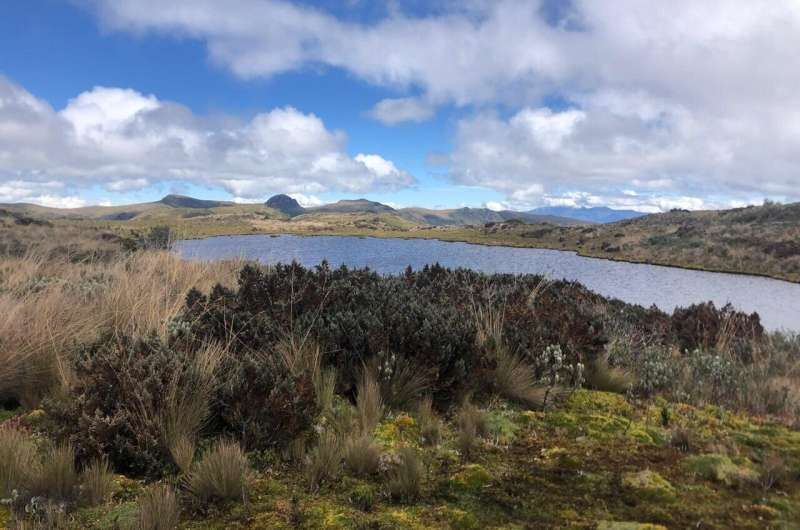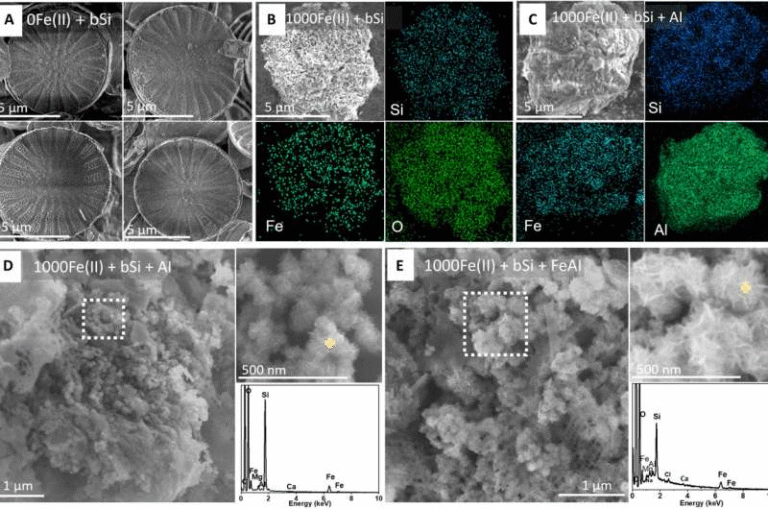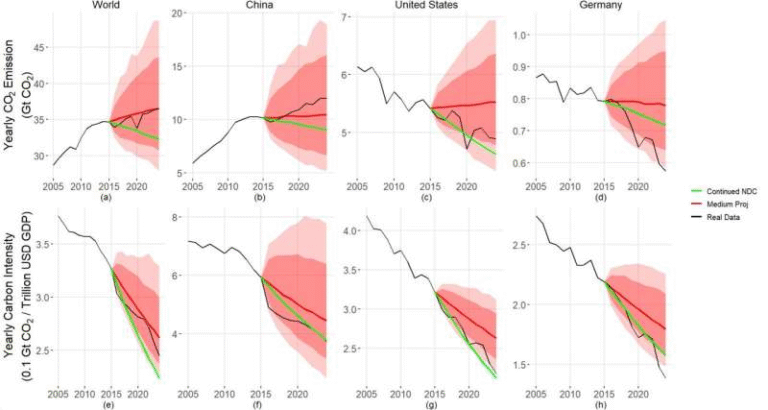Tiny High-Altitude Ponds in the Andes Could Be Major Hidden Contributors to Climate Change

Small ponds tucked away in the high tropical Andes might not look like much, but new research suggests they could be quietly releasing significant amounts of greenhouse gases into the atmosphere. A team led by scientists from the University of North Carolina at Chapel Hill (UNC) has found that even tiny, often-overlooked ponds in Ecuador’s páramo grasslands emit surprisingly large amounts of carbon dioxide (CO₂) and methane (CH₄)—sometimes more than larger nearby lakes. This discovery opens up a major gap in how we think about carbon cycling in mountain ecosystems and why these small, scattered bodies of water might matter far more than we once believed.
The study was conducted in Ecuador’s high-elevation peatland-rich páramo ecosystem, located roughly between 3,400 and 4,500 meters above sea level. The páramo is cold, humid, and famous for its sponge-like soils that store large amounts of organic carbon. But until now, almost no one had examined how the region’s countless small ponds interact with that stored carbon, especially in terms of how much greenhouse gas they might be releasing.
The research team sampled 11 small ponds, each less than 5,000 square meters in surface area, and also included a wetland site for comparison. They visited during the wet season and then revisited eight of the same ponds in the dry season to capture seasonal changes. For each site, they measured partial pressure of CO₂ (pCO₂), partial pressure of CH₄ (pCH₄), and CO₂ emission rates directly from the pond surfaces. They also assessed the ponds’ water temperatures, elevations, and how strongly they were connected to surrounding peat soils, which are rich in organic carbon.
One of the standout findings was the high concentration of methane in these ponds. The average pCH₄ concentration across the ponds was roughly 1,096 ± 1,482 µatm, a clear sign of strong methane supersaturation, which can lead to significant emissions. Meanwhile, pCO₂ levels averaged around 1,224 ± 1,585 µatm, though some ponds were actually undersaturated in CO₂, showing how complex and variable carbon dynamics in these systems can be.
When the researchers calculated greenhouse-gas fluxes, they observed mean wet-season emissions of about 0.34 ± 0.54 g CO₂-C m⁻² day⁻¹ and 0.012 ± 0.018 g CH₄-C m⁻² day⁻¹. Although methane emissions were lower by mass, CH₄ is far more potent than CO₂ as a greenhouse gas. What surprised the scientists most was that smaller ponds often emitted more carbon per unit area than larger lakes nearby, suggesting that pond size alone is not a reliable indicator of climate impact.
The team identified several major factors driving emission differences among ponds:
- Elevation: Higher-elevation ponds, which tend to have cooler water, generally emitted less carbon, though patterns varied.
- Water Temperature: Warmer ponds consistently released more CO₂ and CH₄.
- Catchment Connectivity: Ponds more strongly connected to peat-rich soils—and therefore organic carbon inputs—released more greenhouse gases.
The findings challenge long-standing assumptions about which freshwater systems matter most in global climate models. In many carbon-cycle assessments, small water bodies are often ignored due to their size or because they’re difficult to map and measure. Yet global estimates already suggest that small ponds may contribute around 15% of total lake and pond CO₂ emissions and over 40% of diffusive methane emissions. The new data from the Andes strongly support the idea that small ponds—especially in carbon-rich landscapes—are punching well above their weight.
This matters because the páramo ecosystem is known for storing vast amounts of carbon in peat soils that have accumulated over thousands of years. If warming temperatures or altered rainfall patterns increase the connectivity between soils and ponds, or simply raise water temperatures, the ponds could become even more significant greenhouse-gas sources. In other words, these little ponds might act as release valves for ancient stored carbon, turning parts of a historically carbon-absorbing ecosystem into a net source of emissions.
The research also highlights some limitations that future studies should address. For example, the sampling area was relatively small and focused on only one region of the Andes. There’s a strong need for more geographically diverse sampling to determine whether these patterns hold across the entire mountain chain or other tropical high-altitude environments. Additionally, the team did not measure ebullition, which is the release of methane through bubbles rising from sediments. Ebullition can account for a major portion of methane emissions in many shallow water bodies, meaning that the actual methane output of these ponds could be higher than reported.
Another factor is that small ponds naturally fluctuate in area across seasons. Some shrink dramatically during the dry months, and these shifts can cause large swings in gas concentrations and emissions. All of this means that creating accurate large-scale models of their total climate impact will require more consistent monitoring through the year.
Still, this study fills a crucial gap in our understanding. High-altitude tropical ecosystems have traditionally been underrepresented in global carbon models, but they may play an outsize role in regulating Earth’s climate. By incorporating data from these small water bodies—once considered too minor to matter—climate scientists can refine global carbon budgets and improve predictions of how mountain landscapes respond to warming.
Understanding the Páramo and Peatland Ecosystems
To help readers better understand why these ponds matter, it’s useful to look a bit more closely at the páramo itself. This ecosystem is found mainly in Ecuador, Colombia, Peru, and Venezuela, and acts like a giant natural water and carbon reservoir. Its soils contain peat, which is essentially partially decomposed plant material that accumulates in cold, wet environments. Peatlands worldwide store more carbon than all the world’s forests combined, despite covering a much smaller area.
Because páramo peatlands are located high in the mountains, they’re particularly vulnerable to climate change. A warming climate could dry out the soils, accelerate decomposition, and increase carbon release. The small ponds scattered across the páramo landscape are essentially spots where water collects and interacts directly with the carbon-rich soils—making them efficient points for gas release.
Understanding these systems is not only important for climate science but also for local water security. The páramo provides a major portion of the drinking water for cities in the northern Andes. Changes in hydrology due to climate change could affect both water availability and ecosystem stability.
Why Small Ponds Matter in the Global Carbon Cycle
Across the world, there are millions of small ponds, far more than there are large lakes. Even though each one covers a tiny area, together they represent a significant portion of the total water–air interface. Scientists increasingly recognize that these small systems often have higher per-area emissions than large lakes because they receive intense inputs of organic matter from surrounding lands and tend to be shallower and warmer.
In short, ignoring small ponds—especially in carbon-rich areas like the páramo—means missing an important part of the global carbon picture. This new study helps close that gap by providing detailed measurements from a region that had been nearly invisible in global analyses.
Research Paper Reference
Water temperature and catchment characteristics drive variation in carbon dioxide and methane emissions from small ponds in a peatland‐rich, high‐altitude tropical ecosystem
https://doi.org/10.1002/lno.70261





